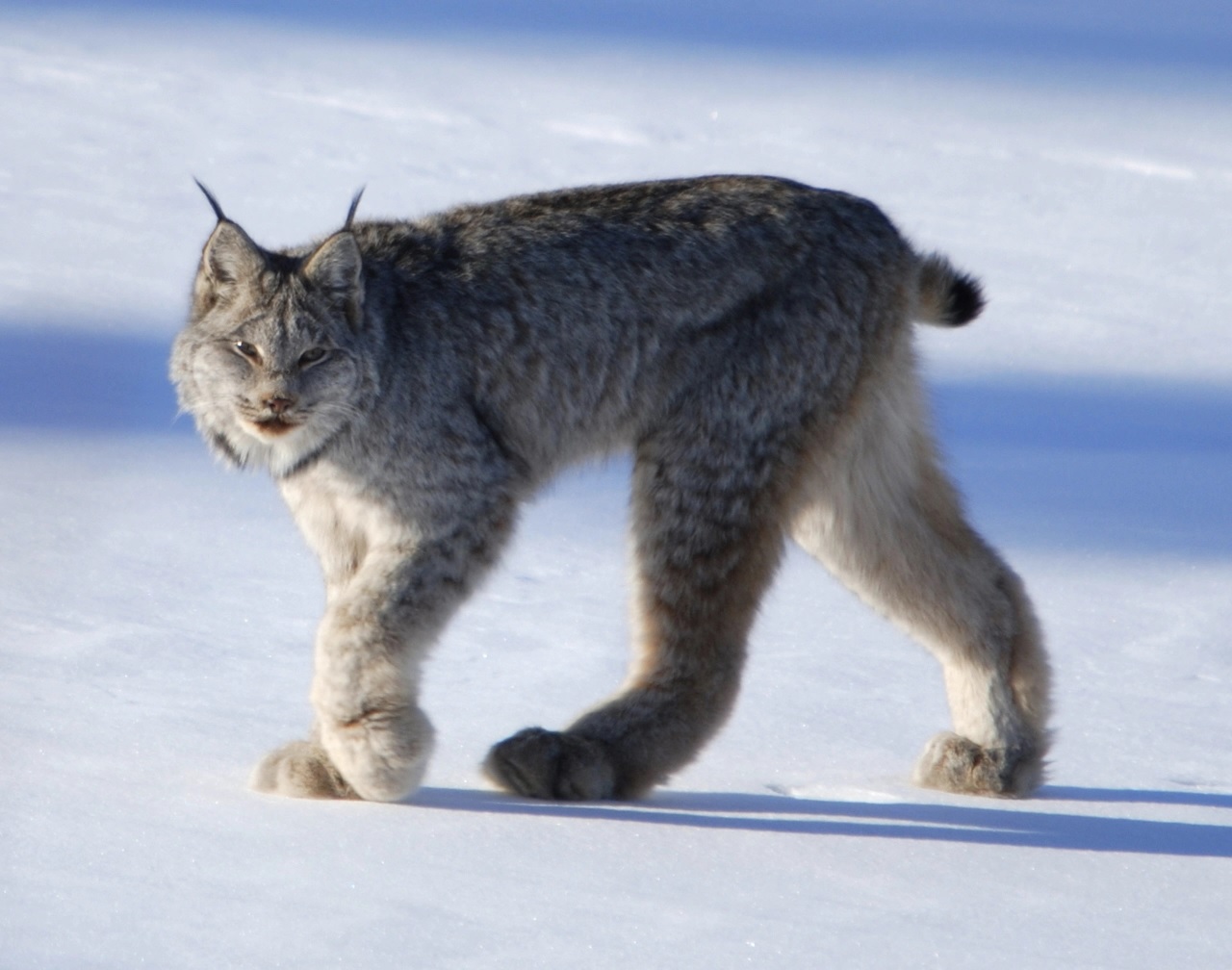
Ever wondered what makes the Canadian Lynx so special? This elusive feline, known for its tufted ears and thick fur, roams the snowy forests of North America. Canadian Lynx are not just any wild cats; they have unique adaptations that help them survive in harsh winter conditions. From their large, snowshoe-like paws to their keen hunting skills, these creatures are fascinating. Did you know they primarily hunt snowshoe hares and can leap up to 25 feet in a single bound? Whether you're a wildlife enthusiast or just curious about nature, these 29 amazing facts will give you a deeper appreciation for this incredible animal. Buckle up for a wild ride through the world of the Canadian Lynx!
What is a Canadian Lynx?
The Canadian Lynx is a fascinating wild cat native to North America. Known for its thick fur, tufted ears, and large paws, this elusive feline is a master of survival in harsh, snowy environments. Let's dive into some amazing facts about this remarkable creature.
-
The Canadian Lynx is primarily found in the boreal forests of Canada and Alaska, but it also inhabits parts of the northern United States.
-
These cats have a dense, silvery-brown coat that helps them blend into their snowy surroundings, providing excellent camouflage.
-
Their large, furry paws act like snowshoes, allowing them to walk on top of deep snow without sinking.
-
Canadian Lynx are solitary animals, usually only coming together during the breeding season.
-
They are nocturnal hunters, relying on their keen sense of sight and hearing to catch prey in the dark.
Diet and Hunting Habits
Canadian Lynx have unique hunting strategies and dietary preferences that set them apart from other wild cats. Their primary prey is the snowshoe hare, but they are opportunistic hunters.
-
The snowshoe hare makes up about 75% of the Canadian Lynx's diet, making their populations closely linked.
-
When hare populations are low, lynx will hunt other small mammals, birds, and even fish.
-
They use a stalking technique to catch prey, silently creeping up before making a quick pounce.
-
Lynx have been known to cache food, hiding it under snow or leaves to eat later.
-
Their sharp retractable claws and powerful jaws make them efficient hunters.
Physical Characteristics
The Canadian Lynx has several distinctive physical traits that help it thrive in its environment. These features are not just for show; they play crucial roles in the lynx's survival.
-
Lynx have long, black tufts of fur on their ears, which enhance their hearing by funneling sound.
-
Their short tails have a black tip, which may serve as a signal to other lynx.
-
The fur on their cheeks forms a ruff that helps protect their face from the cold.
-
They have a robust build, with males typically weighing between 18 to 24 pounds and females slightly less.
-
Lynx can leap up to 10 feet in a single bound, an essential skill for catching agile prey.
Reproduction and Lifespan
Understanding the reproductive habits and lifespan of the Canadian Lynx provides insight into their population dynamics and survival strategies.
-
Female lynx give birth to litters of 1 to 8 kittens, usually in late spring or early summer.
-
Kittens are born blind and helpless, relying on their mother for food and protection.
-
By the age of 3 months, lynx kittens begin learning to hunt by observing their mother.
-
Lynx reach sexual maturity at around 2 years old.
-
In the wild, Canadian Lynx can live up to 14 years, though many do not reach this age due to predation and other factors.
Conservation Status
The Canadian Lynx faces several threats that impact its survival. Conservation efforts are crucial to ensure this species continues to thrive in the wild.
-
Habitat loss due to logging and human development poses a significant threat to lynx populations.
-
Climate change affects the availability of snowshoe hares, impacting lynx food sources.
-
Lynx are sometimes trapped for their fur, though this practice is regulated in many areas.
-
Conservation programs focus on habitat protection, research, and monitoring lynx populations.
-
The Canadian Lynx is listed as a species of least concern by the IUCN, but certain populations are considered threatened.
Interesting Behaviors
Canadian Lynx exhibit a range of behaviors that highlight their adaptability and intelligence. These behaviors are often observed in the wild and provide a glimpse into their daily lives.
-
Lynx are excellent swimmers and will cross rivers and lakes in search of food or territory.
-
They communicate through vocalizations, scent marking, and body language.
-
During the winter, lynx will follow the tracks of snowshoe hares, using their keen sense of smell to locate prey.
-
Lynx are known to be curious animals, often investigating new objects or scents in their environment.
The Final Pounce
Canadian lynxes are fascinating creatures with their tufted ears, large paws, and elusive nature. These wild cats thrive in the cold, snowy forests of North America, relying on their keen senses and agility to hunt snowshoe hares. Their thick fur not only keeps them warm but also camouflages them in their icy habitats.
Lynxes play a crucial role in maintaining the balance of their ecosystem by controlling hare populations. Despite their solitary and secretive lives, they face threats from habitat loss and climate change. Conservation efforts are essential to ensure these majestic animals continue to roam the wild.
Understanding the Canadian lynx helps us appreciate the delicate balance of nature and the importance of preserving it. Next time you think of the wilderness, remember the lynx and its incredible adaptations. Keep exploring and learning about the wonders of our natural world.
Was this page helpful?
Our commitment to delivering trustworthy and engaging content is at the heart of what we do. Each fact on our site is contributed by real users like you, bringing a wealth of diverse insights and information. To ensure the highest standards of accuracy and reliability, our dedicated editors meticulously review each submission. This process guarantees that the facts we share are not only fascinating but also credible. Trust in our commitment to quality and authenticity as you explore and learn with us.


